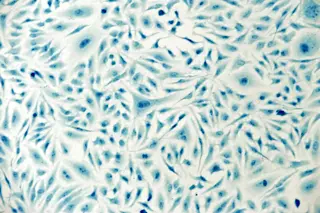(Credit: YuriyZhuravov/Shutterstock) It’s easy to tell what color someone’s hair is, but figuring out the genetics behind how it got that way is anything but simple. A new study from a team of international researchers analyzing 300,000 people of European descent finds more than 100 new genes related to hair color in some way. But even with their newfound knowledge, the researchers have only partial success predicting hair color based solely on genes. It's a testament to the knotty genetics of pigmentation, but their research also turned up a surprising finding: Women are more likely to have lighter-colored hair than men are.
The researchers relied on what's called a genome-wide association study (GWAS) for their research, using data from genetic profiling company 23andme and UK Biobank, a collection of genetic data from people in the United Kingdom. GWAS' look for statistical trends in large collections of genetic data, and attempt ...














